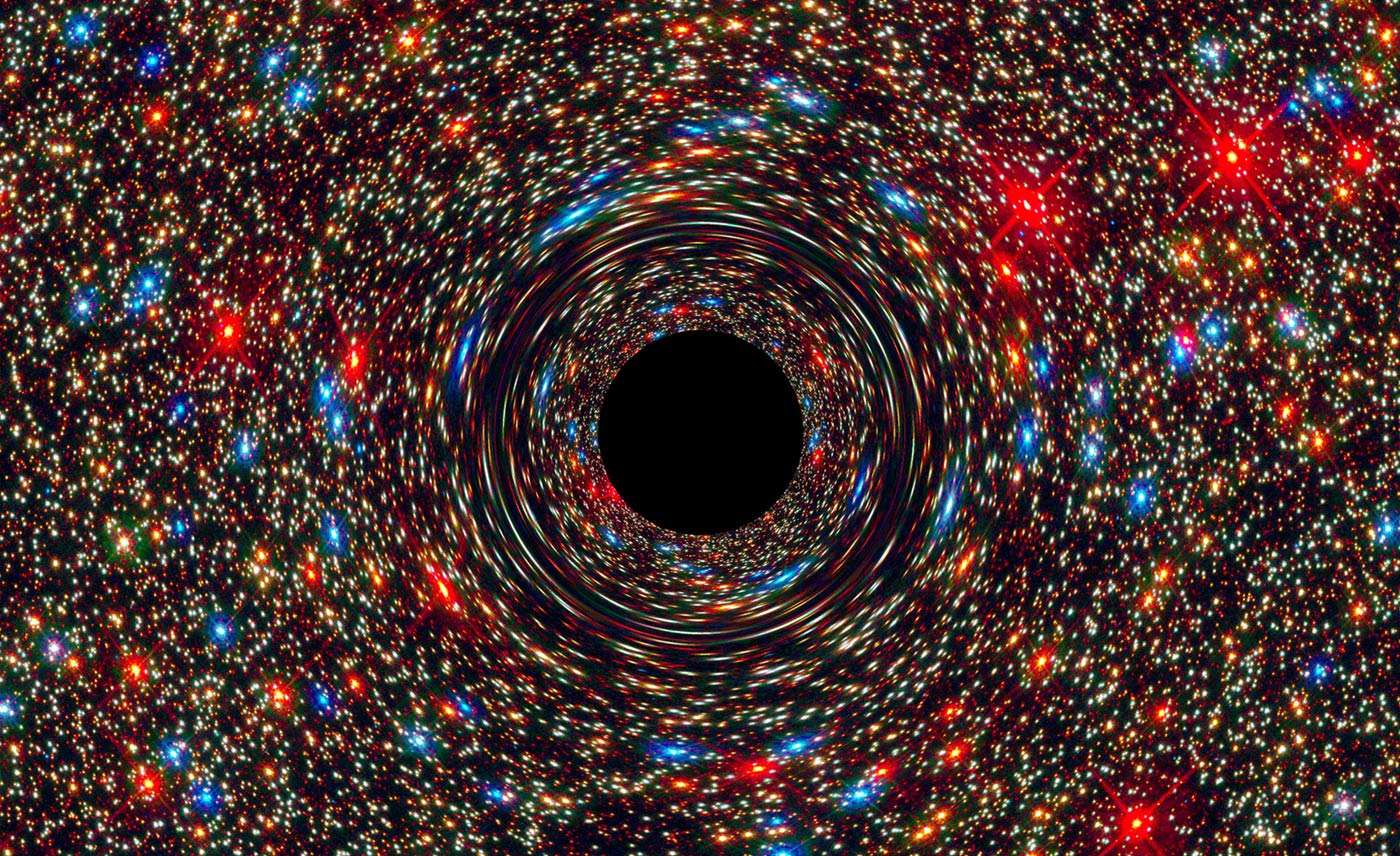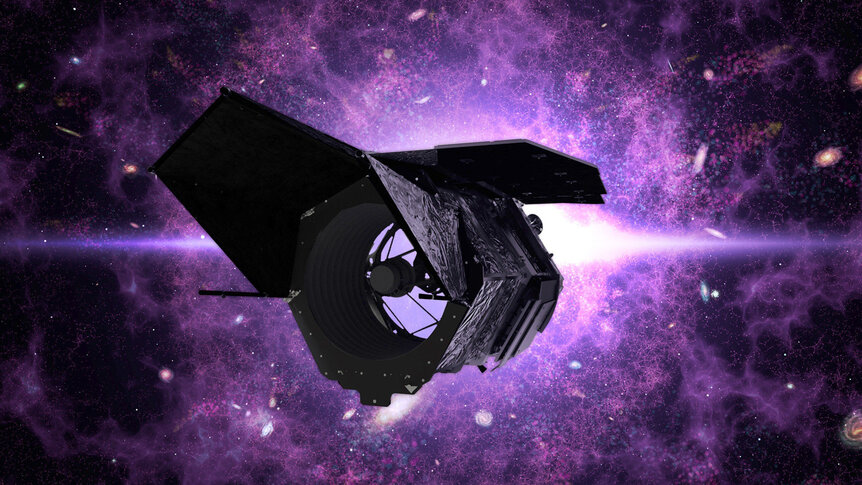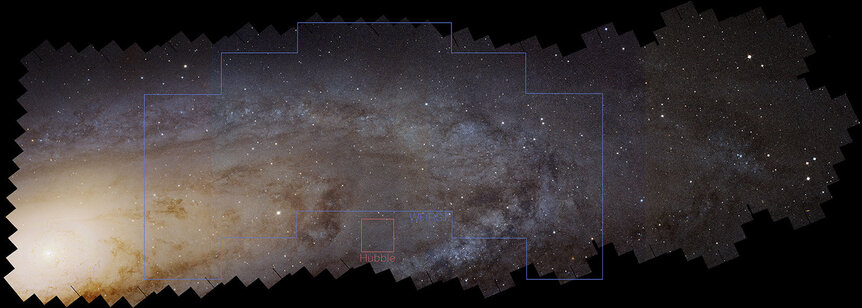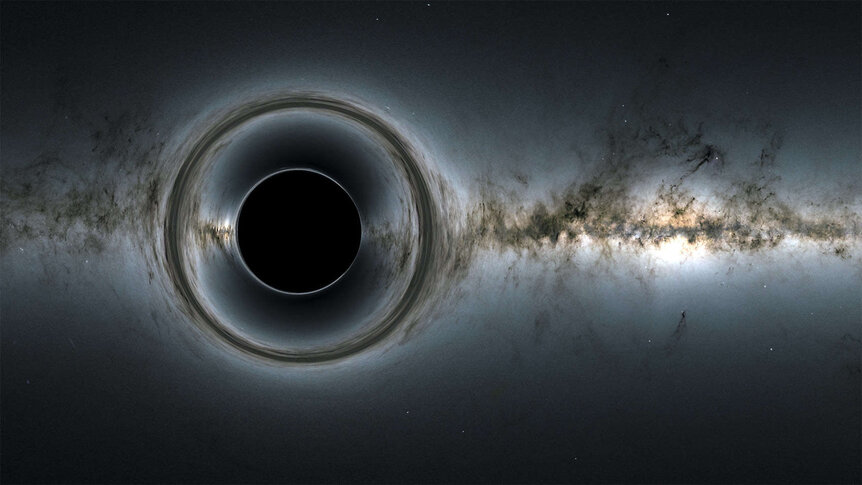Create a free profile to get unlimited access to exclusive videos, sweepstakes, and more!
Millions of lonely black holes are in our galaxy. Here’s how we’ll find some of them.

How many black holes are there in our galaxy?
We don't know. But we can make a decent guess: We know the kinds of stars that make black holes (massive stars that explode at the ends of their lives), we know how many of those kinds of stars are born over time, and we know how old the galaxy is.
Putting that all together and doing the math, you get that the galaxy may have ten million black holes in it. Yikes.
…but that number is so uncertain there could be as many as a billion of them, too. A billion black holes out there in the Milky Way!
The problem is finding them. They're black. That makes them tough to see against the blackness of space. Now, some of them orbit stars, drawing matter off that gets infernally hot and glows brightly, making them easy to spot. We know of a couple of dozen like that. That leaves 999,999,980 or so left to discover.
Enter the Nancy Roman Space Telescope.
This telescope is in the early stages now, with engineering models being built to test out the design. Scheduled for launch "in the mid-2020s" (which seems aspirational, but shouldn't be too long after that) and costing about $4 billion (including the first five years of mission costs), it's based on what NASA calls "legacy" hardware and concepts, ideas and tech developed for previous missions that have been shown to work.
Roman is very similar to the Hubble Space Telescope: It will sport a 2.4-meter primary mirror, the same size as Hubble's. But it will have a far, far wider field of view, meaning it will see larger chunks of the sky. How much bigger? In a single image it will see one hundred times as much of the sky as Hubble.
So, for example, to get the equivalent of the incredible image of the Andromeda galaxy that took Hubble 400 pointings, Roman will do in four. Yes, four.
And this is why Roman will find so many black holes. While they're dark, they have a profound effect on light that passes by them.
Light flows through space, but gravity warps space, distorting it like a bowling ball sitting on a trampoline. The path light takes going past an object will bend to follow the warp in space made by the object's gravity. The higher the gravity, the more space warps, and the more the light's path will bend.
Perhaps you see where this is going.
A black hole warps space severely. If a black hole passes between us and more distant star, for example, all manners of weird things happen to the light we see from the star. It can get amplified, making the star brighter. It can get smeared out, making the star look like a ring, or create multiple images of the star. We call this effect gravitational lensing, since gravity acts like a lens, bending the light.
That's cool, but here's the very cool bit: The Sun, that background star, and the black hole are all orbiting around the center of our galaxy, so they're all moving relative to one another. If the alignment is just so, we can actually see the star appear to move back and forth a bit on the sky as its light is bent by the passing black hole!
This won't happen hugely often because the alignment has to be fairly precise; the effect is small, with a shift of only about a milliarcsecond (one arcsecond is 1/3600th of a degree, and the full Moon on the sky is about 1,800 arseconds). Because the shift is so small we call it microlensing.
But here's where the Roman Space Telescope steps in: Its Wide-Field Imager camera looks at such a huge area of the sky (a quarter of a degree at one shot, half the width of the full Moon on the sky) with such high resolution (nearly the same as Hubble's, so sharp) and precision that just by chance it will catch this motion.
To maximize that chance astronomers will point it toward the center of the galaxy, where it will see many tens or even hundreds of millions of stars at once. By taking many images of the same field over time, any tiny shift in a star's position can be recorded. By doing this it's expected to find hundreds of solitary black holes between us and the center of the galaxy just under 26,000 light years away.
It's still a tiny fraction of the lonely dark black holes out there, but it's a whole lot more than we've seen so far. And by measuring the change in the star's position we can get the black hole's distance from us (likely thousands of light years), its mass, and it's velocity through space.
But wait! There's more!
Stars and planets can cause this gravitational lensing as well. If a solar system between us and the galactic center drifts past a more distant star, we can see the background star's brightness increase (the position shift is too small to measure). Quite a few planets thousands of light years from Earth have already been discovered this way. Roman should find a substantial number more.
Not that any of this is easy. The positions of all those stars will shift due to parallax as Roman orbits the Sun, for example, and changes in the camera's temperature can distort the detector a teeny bit (though this can be mapped very accurately and corrected). So astronomers will have their work cut out for them once Roman starts looking for these events.
Hubble Space Telescope was a revolution in astronomy. Once the focus issue was fixed it provided us with stunningly crisp and deep images of the Universe, and we leapt forward in our understanding of it.
What will the Nancy Roman Space Telescope be able to do with 100 times as much of the cosmos to see at once?






























